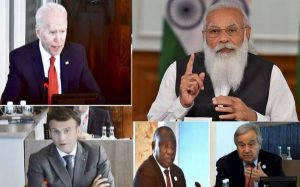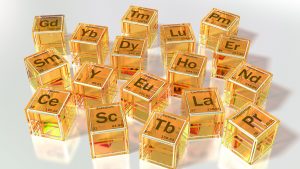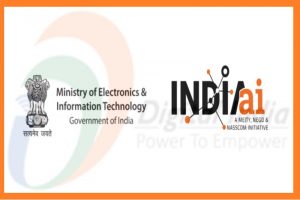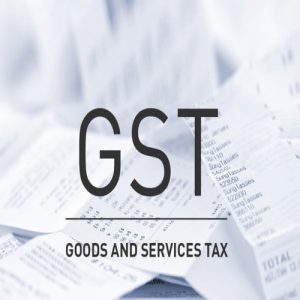Today Current Affairs: 14th June 2021 for UPSC IAS exams, State PSC exams, SSC CGL, State SSC, RRB, Railways, Banking Exam & IBPS, etc
Table of Contents
G7 Meet:

The leaders of seven nations — the U.S., Germany, the U.K., France, Canada, Japan and Italy — met in Cornwall in south-west England, marking the 47th edition of the “Group of seven” summit.
- India is a “natural ally” to work with the world’s richest G7 countries to fight against threats of authoritarianism, said Prime Minister Narendra Modi, speaking at a special outreach session for guest countries on “Open Societies and Open Economies” at the G7 summit that ended in Corbis Bay, U.K., on Sunday.
- The United Kingdom had invited India, Australia and South Korea to attend the G7 summit that was scheduled to be held in June as “guest countries”
About the G7 meet:
- The leaders of seven nations — the U.S., Germany, the U.K., France, Canada, Japan and Italy — met in Cornwall in south-west England, marking the 47th edition of the “Group of seven” summit.
- G-7 leaders agreed on Sunday to raise their contributions to meet an overdue spending pledge of $100 billion a year to help poorer countries cut carbon emissions and cope with global warming.
- Addressing the First Outreach Session of G7 summit, Prime Minister Narendra Modi on Saturday conveyed India’s commitment to “collective” solution to global health challenges.
- Prime Minister Modi called for a “one earth, one health” approach which aims for unity and solidarity among the states of the world to deal with the pandemic.
- The Finance Ministers of the G7 had met on June 4-5 in the run-up to the summit and had agreed to back a minimum global tax rate of 15% for multinational corporations, thereby setting the stage for MNCs to pay a fairer share of taxes in jurisdictions where they make money and profits, rather than playing governments in a race where they will compete on who will tax them the least and allowing MNCs to take advantage of “tax havens”.
G7:
- The G7, originally G8, was set up in 1975 as an informal forum bringing together the leaders of the world’s leading industrial nations.
- The summit gathers leaders from the European Union (EU) and the following countries: Canada, France, Germany, Italy, Japan, the United Kingdom, and the United States.
- The major purpose of the G-7 is to discuss and deliberate on international economic issues. It sometimes acts in concert to help resolve other global problems, with a special focus on economic issues.
PASIPHAE Project:

The Wide Area Linear Optical Polarimeter (WALOP), a vital instrument for the PASIPHAE Project, is being developed at Inter-University Centre for Astronomy and Astrophysics (IUCAA), India.
- Polar-Areas Stellar-Imaging in Polarisation High-Accuracy Experiment (PASIPHAE) is an international collaborative sky surveying project.
About the PASIPHAE Survey:
- It is an opto polarimetric survey aiming to measure the linear polarization from millions of stars.
- The survey will use two high-tech optical polarimeters to observe the northern and southern skies, simultaneously.
- The survey will be conducted concurrently from the South African Astronomical Observatory in Sutherland, South Africa in the southern hemisphere, and the Skinakas Observatory in Crete, Greece, in the north.
- It will focus on capturing starlight polarisation of very faint stars that are so far away that polarisation signals from there have not been systematically studied.
- The distances to these stars will be obtained from measurements of the GAIA satellite.
- GAIA is on a mission to chart a three-dimensional map of our Galaxy, the Milky Way, in the process revealing the composition, formation and evolution of the Galaxy. It is a European Space Agency astronomical observatory mission.
- Scientists from the University of Crete, Greece, Caltech, USA, IUCAA, India, the South African Astronomical Observatory and the University of Oslo, Norway, are involved in this project, steered by the Institute of Astrophysics, Greece.
Wide Area Linear Optical Polarimeter (WALOP):
- It was planned in 2013 after the success of the RoboPol experiment survey during 2012-2017.
- WALOP and its predecessor RoboPol share the photometry (measurement of the brightness of celestial objects) principle.
- But the WALOP will be capable of observing hundreds of stars concurrently present both in the northern and the southern skies as opposed to RoboPol, which has a much smaller field of view in the sky.
China’s Monopoly: Rare Earth Metals:

China’s dominance in the rare earth metals, key to the future of manufacturing, is posing a major concern for the West.
- China has over time acquired global domination of rare earths, even at one point, it produced 90% of the rare earths the world needs.
- Today, however, it has come down to 60% and the remaining is produced by other countries, including the Quad (Australia, India, Japan and United States).
- Since 2010, when China curbed shipments of Rare Earths to Japan, the US, and Europe, production units have come up in Australia, and the US along with smaller units in Asia, Africa, and Latin America.
- Even so, the dominant share of processed Rare Earths lies with China.
- India has the world’s fifth-largest reserves of rare earth elements, nearly twice as much as Australia, but it imports most of its rare earth needs in finished form from China.
- In 2019, the US imported 80% of its rare earth minerals from China while the European Union gets 98% of its supply from China.
Rare Earth Elements:
- They are a set of seventeen metallic elements. These include the fifteen lanthanides on the periodic table in addition to scandium and yttrium that show similar physical and chemical properties to the lanthanides.
- The 17 Rare Earths are cerium (Ce), dysprosium (Dy), erbium (Er), europium (Eu), gadolinium (Gd), holmium (Ho), lanthanum (La), lutetium (Lu), neodymium (Nd), praseodymium (Pr), promethium (Pm), samarium (Sm), scandium (Sc), terbium (Tb), thulium (Tm), ytterbium (Yb), and yttrium (Y).
- These minerals have unique magnetic, luminescent, and electrochemical properties and thus are used in many modern technologies, including consumer electronics, computers and networks, communications, health care, national defense, etc.
- Even futuristic technologies need these REEs (For example high-temperature superconductivity, safe storage and transport of hydrogen for a post-hydrocarbon economy, environmental global warming and energy efficiency issues).
- They are called ‘rare earth’ because earlier it was difficult to extract them from their oxides forms technologically.
- They occur in many minerals but typically in low concentrations to be refined in an economical manner
National AI Portal:

The ‘National AI Portal’, celebrated its first anniversary on 28th May, 2021.
- It is a joint initiative by the Ministry of Electronics and IT (MeitY), National e-Governance Division (NeGD) and NASSCOM.
- NeGD: In 2009, NeGD was created as an Independent Business Division under the Digital India Corporation (a not-for-profit company set up by MeitY).
- NASSCOM: A not-for-profit industry association, is the apex body for the IT and IT-enabled products and services sector in India.
- It serves as a central hub for Artificial Intelligence (AI) related news, learning, articles, events, and activities, etc., in India and beyond.
About Artificial Intelligence (AI):
- It describes the action of machines accomplishing tasks that have historically required human intelligence.
- It includes technologies like machine learning, pattern recognition, big data, neural networks, self algorithms, etc.
- AI involves complex things such as feeding a particular data into the machine and making it react as per the different situations.
- AI is being used across different industries including finance and healthcare.
- As per a report by PwC, India reported a 45% increase in the use of AI, the highest among all countries, following the outbreak of the virus.
Policy On Archiving, Declassification, And Compilation/publication Of War/Operations Histories:

Raksha Mantri Rajnath Singh has approved the policy on archiving, declassification and compilation/publication of war/operations histories by the Ministry of Defence.
Features of Policy:
- Each organization under the Ministry of Defence will transfer the records, including war diaries to the History Division of the Ministry of Defence (MoD) for proper upkeep, archival, and writing the histories.
- According to the policy, records should ordinarily be declassified in 25 years.
- Records older than 25 years should be appraised by archival experts and transferred to the National Archives of India once the war/operations histories have been compiled.
- A committee headed by Joint Secretary, MoD and comprising of representatives of the Services, MEA, MHA and other organizations and prominent military historians (if required) should be constituted for compilation of war/ operations histories.
- War/operations histories to be compiled within 5 years
- The above-mentioned Committee should be formed within two years of completion of war/operations.
- Thereafter, the collection of records and compilation should be completed in three years and disseminated to all concerned.
Northern Ireland Protocol:

Britain and the EU are locked in an escalating diplomatic feud over Northern Ireland, the only part of the U.K. that borders the 27-nation bloc. The EU says Britain must fully implement the agreement, known as the Northern Ireland Protocol, that the two sides agreed and ratified.
- It came into force on 1 January 2021 and is now part of international law.
- Under the protocol, both sides agreed that, even though Northern Ireland was no longer part of the EU, it would continue to follow many of its rules.
- This would enable lorries to continue driving across the land border without being inspected.
- Meanwhile, England, Scotland, and Wales are no longer following those rules – leading to a new “regulatory” border between Great Britain and Northern Ireland.
- New checks on goods now need to be carried out when they enter Northern Ireland from England, Scotland, or Wales.
- Inspections take place at Northern Ireland ports, and customs documents have to be filled in.
- Geographically, Northern Ireland is part of Ireland. Politically, it’s part of the United Kingdom.
44th GST Council Meeting:

The 44th GST Council met under the Chairmanship of the Union Finance Minister. The Council in its meeting has decided to reduce the GST rates on various items being used in Covid-19 relief and management till 30th September 2021.
Key highlights:
- It decided to waive the tax levied on two critical drugs against COVID-19 and mucormycosis — tocilizumab and amphotericin B — and reset the tax rate to 5% for 14 major pandemic relief items, till September 30.
- The 5% GST levied on vaccines was left unchanged.
- The GST rate on Remdesivir and anti-coagulants like Heparin have been reduced from 12% to 5%.
- Ambulances, which are currently taxed at 28%, will attract a GST levy of 12%, while temperature checking equipment and electric furnaces used in crematoriums will attract a 5% GST instead of 18%.
- For oxygen concentrators, medical-grade oxygen, and related devices such as ventilators, BiPAP machines, the GST rate has also been brought down to 5% from 12%.
- The same reduction has been approved in the levies on COVID-testing kits and pulse oximeters.
- The 5% rate will apply to personal imports of oxygen concentrators as well as pulse oximeters, while the 18% GST payable on hand sanitizers has been reduced to 5%.
Bharitalasuchus Tapani.:

In the mid 20th century, researchers from the Indian Statistical Institute, Kolkata, carried out extensive studies on rocks of the Yerrapalli Formation in what is now Telangana, uncovering several fossils.
- By studying some of these specimens stored at the Institute, an international team has now thrown light on a carnivorous reptile that lived 240 million years ago.
- They named it Bharitalasuchus Tapani.
- In the Telugu language, Bhari means huge, Tala means head, and Suchus is the name of the Egyptian crocodile-headed deity.
- The species is named after paleontologist Tapan Roy Chowdhury in honor of his extensive work on the Yerrapalli Formation tetrapod fauna.
- This reptile belonged to a family of extinct reptiles named Erythrosuchidae.
- Bharitalasuchus Tapani were robust animals with big heads and large teeth, and these probably predated other smaller reptiles. They were approximately the size of an adult male lion and might have been the largest predators in their ecosystems.
- The Yerrapalli Formation is a Triassic rock formation consisting primarily of mudstones that outcrops in the Pranhita–Godavari Basin in Telangana.
Operation Olivia:

Every year, the Indian Coast Guard’s “Operation Olivia”, initiated in the early 1980s, helps protect Olive Ridley turtles as they congregate along the Odisha coast for breeding and nesting from November to December.
- Round-the-clock surveillance is conducted from November till May utilizing Coast Guard assets such as fast patrol vessels, air cushion vessels, interceptor craft, and Dornier aircraft to enforce laws near the rookeries.
- The Orissa Marine Fisheries Act empowers the Coast Guard as one of its enforcement agencies.
- The Olive Ridley (Lepidochelys olivacea) is listed as vulnerable under the International Union for Conservation of Nature’s Red list.
- All five species of sea turtles found in India are included in Schedule I of the Indian Wildlife Protection Act, 1972, and in the Appendix I of the Convention of International Trade in Endangered Species of Wild Fauna and Flora which prohibits trade in turtle products by signatory countries




